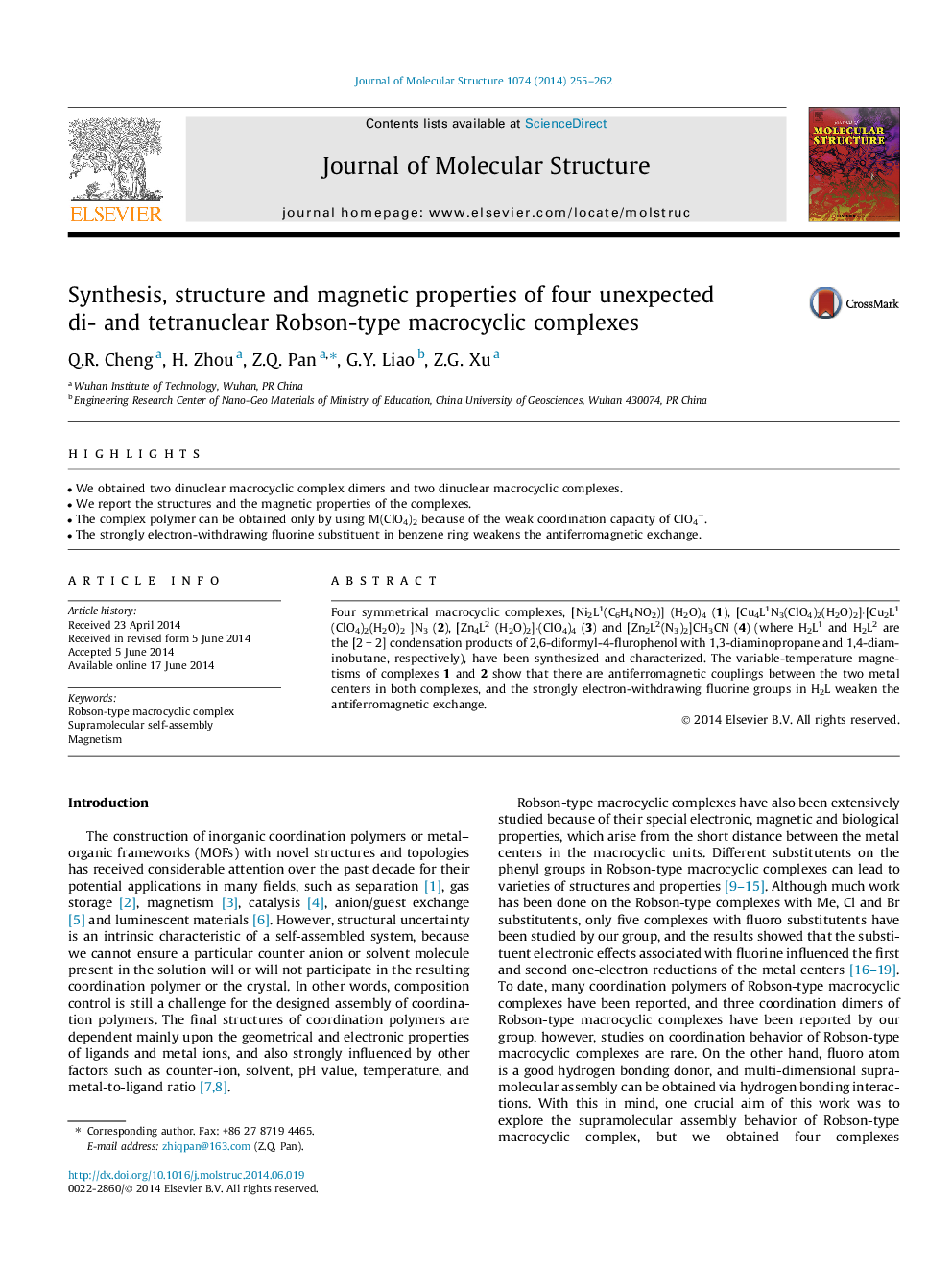| Article ID | Journal | Published Year | Pages | File Type |
|---|---|---|---|---|
| 1402369 | Journal of Molecular Structure | 2014 | 8 Pages |
•We obtained two dinuclear macrocyclic complex dimers and two dinuclear macrocyclic complexes.•We report the structures and the magnetic properties of the complexes.•The complex polymer can be obtained only by using M(ClO4)2 because of the weak coordination capacity of ClO4−.•The strongly electron-withdrawing fluorine substituent in benzene ring weakens the antiferromagnetic exchange.
Four symmetrical macrocyclic complexes, [Ni2L1(C6H4NO2)] (H2O)4 (1), [Cu4L1N3(ClO4)2(H2O)2]·[Cu2L1(ClO4)2(H2O)2 ]N3 (2), [Zn4L2 (H2O)2]·(ClO4)4 (3) and [Zn2L2(N3)2]CH3CN (4) (where H2L1 and H2L2 are the [2 + 2] condensation products of 2,6-diformyl-4-flurophenol with 1,3-diaminopropane and 1,4-diaminobutane, respectively), have been synthesized and characterized. The variable-temperature magnetisms of complexes 1 and 2 show that there are antiferromagnetic couplings between the two metal centers in both complexes, and the strongly electron-withdrawing fluorine groups in H2L weaken the antiferromagnetic exchange.
